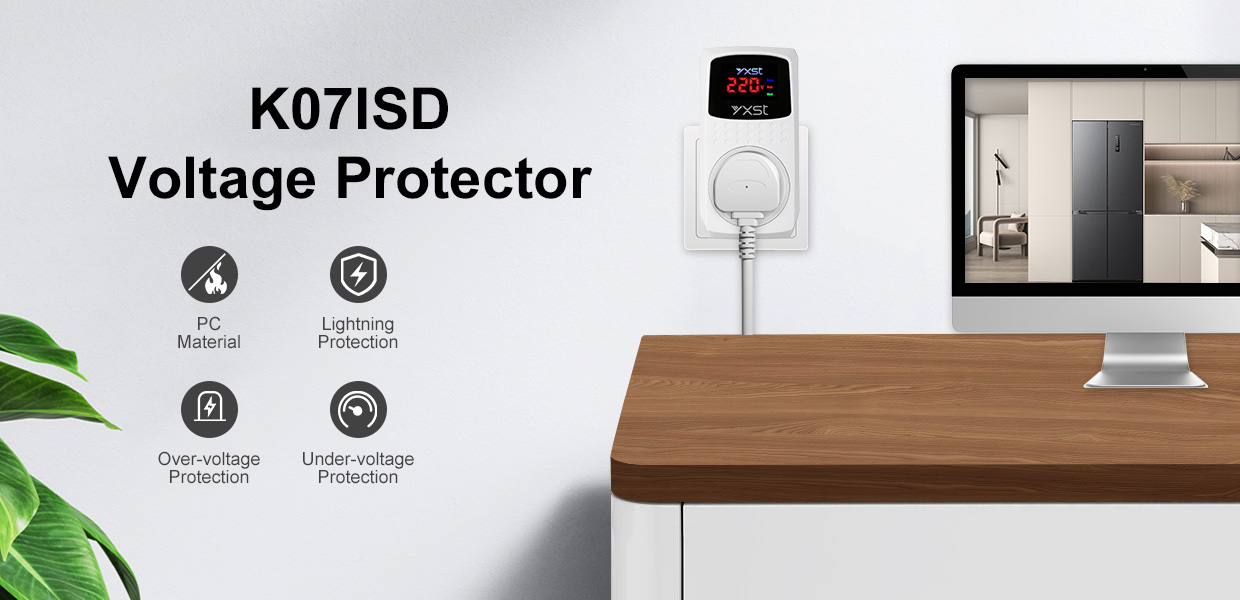The topic of this article is about the normal range of high and low voltage, which is more dangerous, and how to protect your home devices from overvoltage?
Automatic voltage protector manufacturer: high voltage and low voltage range
Automatic voltage protector manufacturers tell you,in the power system, the definitions of high voltage and low voltage are usually as follows:
Low voltage
Alternating current: usually refers to a power system with a rated voltage below 1000 volts (1kV).
Direct current: generally refers to a power system with a rated voltage below 1500 volts (1.5kV).
High voltage
Alternating current: generally refers to a power system with a rated voltage above 1000 volts (1kV).
Direct current: generally refers to a power system with a rated voltage above 1500 volts (1.5kV).
In the power system, the scope of use of high-voltage and low-voltage
Low voltage
Household electricity: used for daily life equipment such as lighting and home appliances, usually 220V or 110V.
Small commercial facilities: such as power supply for small shops and offices.
Electrical equipment: small equipment such as low-voltage motors and transformers.
Lighting system: street lighting, park lighting, etc.
High voltage
Power transmission: To reduce energy losses, high-voltage lines, usually 35kV and above, are used for long-distance power transmission.
Industrial use: power supply for large industrial equipment, high-voltage motors, and transformers.
Substation: convert high-voltage electricity into low-voltage electricity for users.
Electric transportation: electric trains and subway systems powered by high voltage.
high voltage and low voltage range Summary:
Each voltage level has its unique advantages and requirements in its application field to ensure the safe and efficient transmission of electricity.

Which is more dangerous, high voltage or low voltage?
Automatic voltage protector manufacturers tell you,in power systems, high voltage is generally more dangerous than low voltage for the following reasons:
The dangers of high-voltage
- Risk of electric shock: High voltage current can penetrate the human body, causing severe electric shock or fatal injury.
- Arc discharge: High voltage electricity is prone to arc discharge when it fails, causing fire or explosion.
- Equipment failure: When high-voltage equipment fails, it may cause large-scale power outages or equipment damage.
The relative safety of low-voltage
Low-voltage electricity is generally safer, especially in home and small commercial environments, where the risk of electric shock is relatively low, but safe operating procedures must still be followed.
Although low voltage is generally safer, safety risks should not be ignored, and any electrical work should be handled with caution to ensure compliance with relevant safety regulations.
How to protect your home devices from overvoltage?
There are several measures you can take to protect your home devices from overvoltage:

※ Use an automatic voltage protector:
Automatic voltage protector manufacturers tell you,install an automatic voltage protector (AVP), a device used to protect electrical equipment from voltage fluctuations, overvoltage, and undervoltage. It can automatically monitor the voltage and take corresponding measures when the voltage exceeds the set range to ensure the safety of the equipment. Applicable to household appliances (such as refrigerators, air conditioners, TVs, computers, printers, audio equipment, etc.)
※ Check the circuit regularly:
Ask a professional electrician to check the home circuit and equipment regularly to ensure the safety and compliance of wires, sockets, and switches.
※ Use a voltage stabilizer:
For sensitive equipment (such as computers, audio, etc.), you can use a voltage stabilizer (AVR) to help maintain a stable voltage.
※ Avoid using high-power devices at the same time:
Avoid using multiple high-power devices at the same time to reduce the risk of shock to the power grid and voltage fluctuations.
※ Use qualified electrical appliances:
Purchase household appliances with overvoltage protection to ensure that the equipment itself has a certain safety performance.
※ Pay attention to the safety of the power cord:
Make sure the power cord and plug are not worn, aged, or damaged to avoid accidents when the voltage increases.
Automatic voltage protector manufacturers tell you,the above measures can effectively reduce the risk of household appliances being affected by overvoltage and ensure the safety and normal operation of the equipment.




